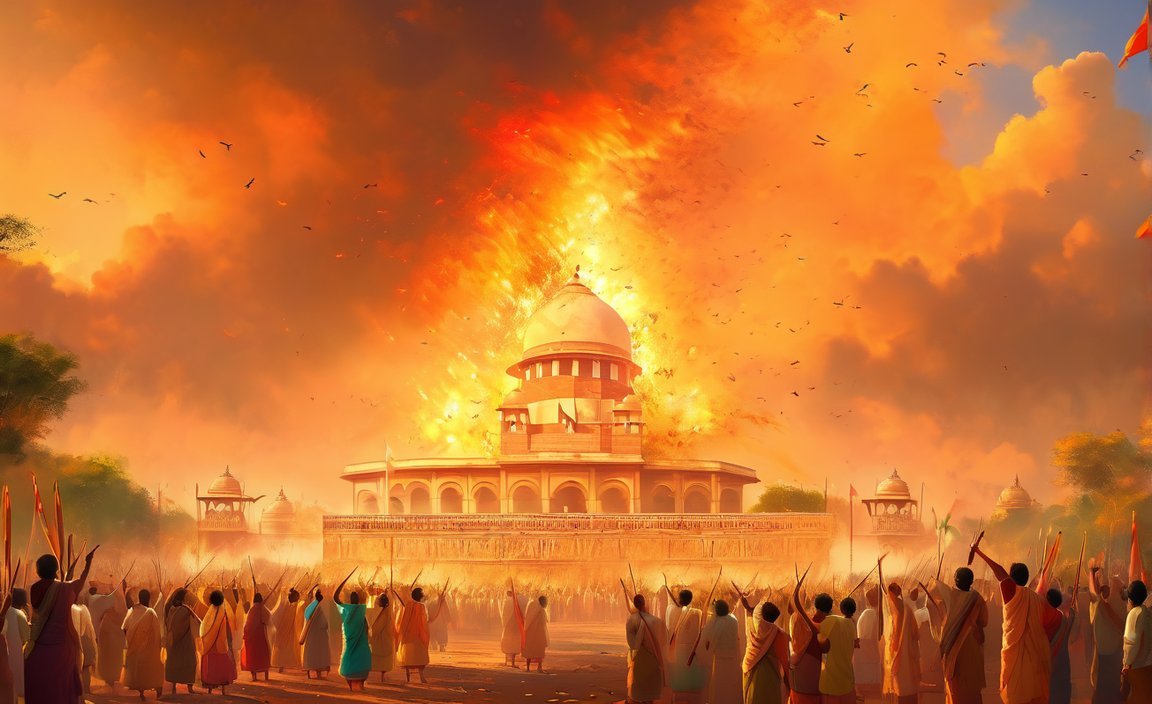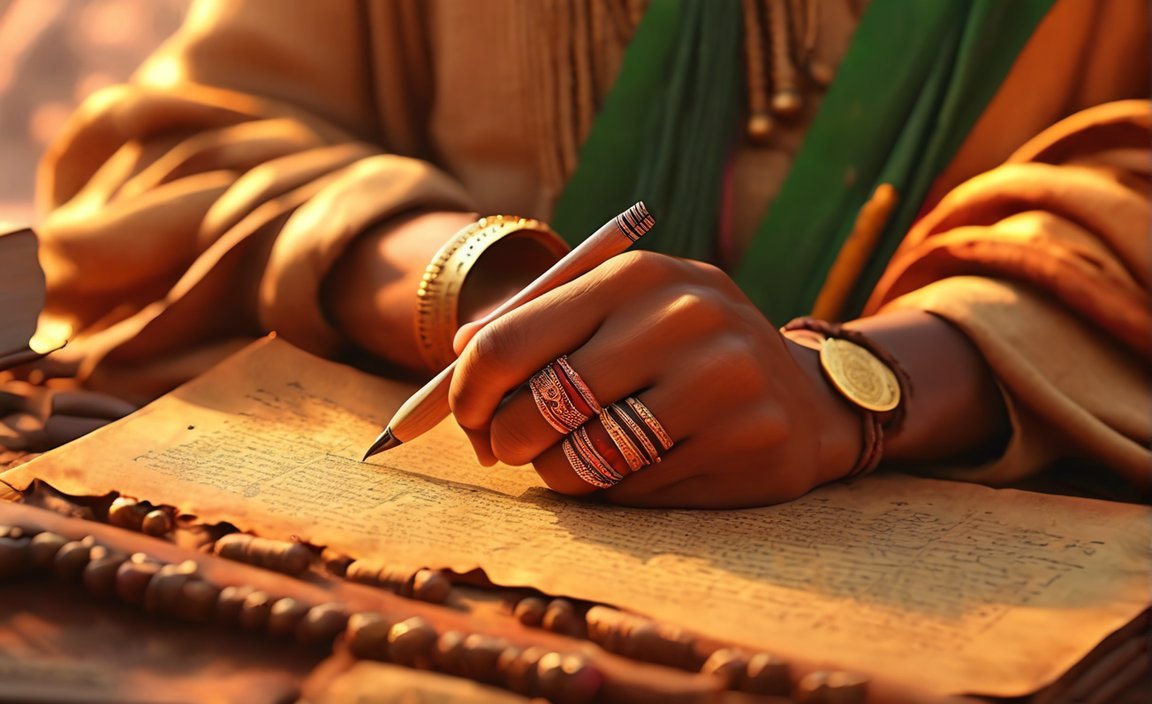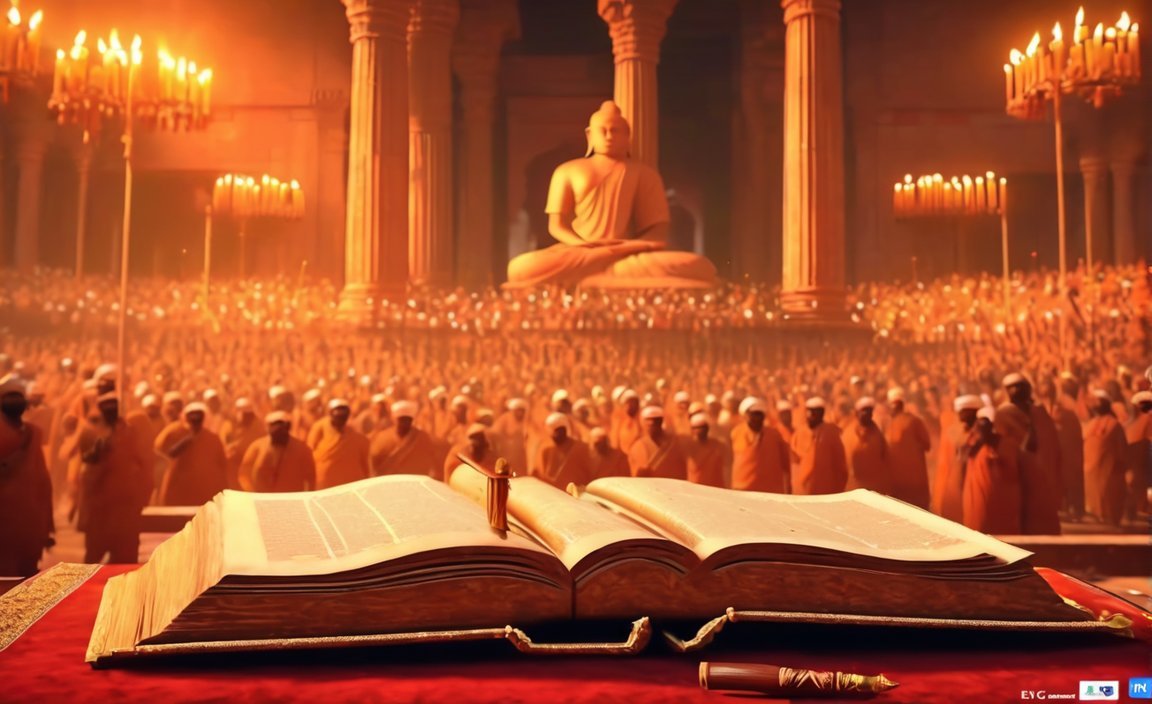Demystifying the Constitution of India: 10 Essential Facts
Welcome to an exploration of the Constitution of India, the bedrock of our nation’s governance and the embodiment of our democratic principles. In this article, we will delve into the fascinating world of constitutional law and unravel the intricacies that make the Indian Constitution unique. As a seasoned constitutional scholar and legal researcher with over a decade of experience, I will guide you through the ten most noteworthy facts about the Constitution of India. Join me on this journey as we demystify the fundamental principles and shed light on the remarkable characteristics that shape our nation’s legal framework.
Key Takeaways:
- The Indian Constitution consists of 48 articles, 12 schedules, and 94 amendments.
- It holds the distinction of being the longest constitution in the world.
- The Constitution was signed by 283 members of the Constituent Assembly and came into effect on January 26, 1950.
- The original hand-written copies of the Constitution are preserved in helium-filled cases in the library of the Parliament House.
- The concept of the Five Year Plan in Indian economic planning was borrowed from the USSR.
- The Indian Constitution was adopted on November 26, 1949.
- It was drafted by a Constituent Assembly elected by members of the Provincial Assemblies.
- The Constitution is a blend of the British, American, and Irish constitutions.
- It has been amended 104 times.
- The Indian Constitution is the supreme law of the land.
10 Facts About the Constitution of India

Handwritten Document with Great Length: The Constitution of India is a unique handwritten document that consists of 48 articles, 12 schedules, and an impressive 94 amendments[^1^]. It holds the distinction of being the longest constitution in the world[^1^].
Significance of January 26, 1950: The Constitution of India came into being on January 26, 1950, marking a momentous milestone in the country’s history[^1^].
Preservation of Original Handwritten Copies: The original copies of the Constitution are well-preserved in helium-filled cases in the library of the Parliament House, symbolizing the importance and sanctity of this document[^1^].
Inspired by Various Constitutional Roots: The Constitution of India draws inspiration from various sources. It is a unique blend of the British, American, and Irish Constitutions[^1^].
Role of the Constituent Assembly: The Constitution was drafted by a Constituent Assembly, consisting of 283 members who were elected by the members of the Provincial Assemblies[^1^].
Adoption of the Constitution: The Indian Constitution was officially adopted on November 26, 1949, after intense deliberation and debates[^1^].
Five Year Plans and Economic Planning: The concept of the Five Year Plan, which plays a crucial role in Indian economic planning, was adapted from the USSR[^1^].
Amendments and Evolving Nature: The Indian Constitution has been subject to change and evolution. It has been amended 104 times to reflect the changing needs and aspirations of the country[^1^].
Supreme Law of the Land: The Indian Constitution is the supreme law of the land, providing the framework for governance and safeguarding the rights and liberties of its citizens[^1^].
Enduring Relevance and Principles: The Constitution of India encompasses enduring principles and values that serve as the foundation of the nation. It reflects the diverse and democratic fabric of the country while ensuring equal rights and opportunities for all[^1^].
For a more comprehensive understanding of the Constitution of India, delve into the sources provided below:
- 110 Interesting Facts About The Indian Constitution
- Top 10 Facts about Constitution of India
Remember, understanding the ten essential facts about the Constitution of India is crucial to gaining a deeper insight into the country’s legal framework and democratic system.
For those curious about the energizing elixirs that seem to power our days, check out these 10 facts about energy drinks. Discover more about the impact they have on our bodies and the controversies surrounding them. Click here to explore further!
Feeling curious about natural disasters? Delve into these 10 facts about floods to learn more about their causes, devastating effects, and the ways communities cope with these calamities. Join the journey by clicking here!
Calling all francophiles! Dive into these 10 facts about France in French and uncover fascinating details about the country’s history, culture, and traditions. Cliquez ici to savoir plus!
Unleash your inner automobile enthusiast and discover intriguing insights about one of the most influential figures in automotive history. Explore these 10 facts about Henry Ford and be amazed by his revolutionary impact on the world. Click here to embark on your journey!
Important Facts about the Constitution of India

The Constitution of India, a hand-written document consisting of 48 articles, 12 schedules, and 94 amendments[^1^], is not only the longest constitution in the world[^1^], but it also holds several significant facts that shed light on its unique characteristics and historical context. Let’s delve into the ten important facts about the Constitution of India:
1. The Indian Constitution’s Significance and Assembly
The Constitution of India was adopted on November 26, 1949, and came into effect on January 26, 1950[^1^]. This date is celebrated as Republic Day in India, marking the transformation of India into a sovereign democratic republic. The Constitution was drafted by a Constituent Assembly, elected by the members of the Provincial Assemblies[^1^]. An impressive total of 283 members of the Constituent Assembly signed the Constitution, demonstrating substantial national consensus[^1^].
2. The Unique Constitutional Document
The original hand-written copies of the Constitution of India are preserved in helium-filled cases in the library of the Parliament House[^1^]. This extraordinary measure aims to protect the precious document from decay and preserve it for future generations.
3. Influences from Multiple Sources
The Indian Constitution is a remarkable blend of various constitutional systems. It incorporates elements from the British, American, and Irish Constitutions[^1^]. This amalgamation highlights India’s aspiration to forge its own democratic path while drawing inspirations from successful democratic models around the world.
4. Amendments and Evolution
Since its adoption, the Indian Constitution has undergone several amendments to reflect the changing needs and aspirations of the Indian people. It has been amended 104 times, affirming its flexibility and responsiveness[^1^]. These amendments have played a crucial role in adapting the Constitution to India’s dynamic socio-economic and political landscape.
5. Devotion to Democracy
The Constitution of India upholds the principles of democracy and ensures that power lies in the hands of the people. It provides for universal adult suffrage, guaranteeing every Indian citizen above the age of 18 the right to vote[^1^]. This democratic ethos is fundamental to India’s constitutional framework.
6. Lengthy and Comprehensive
The Indian Constitution is the longest constitution in the world. With its 448 articles and 12 schedules, it covers a wide range of topics, including fundamental rights, directive principles of state policy, and the structure of the government[^1^]. This comprehensive approach reflects India’s commitment to address various aspects of governance and safeguard the rights and welfare of its citizens.
7. Economic Vision: The Five Year Plan
India’s economic planning owes its origins to the concept of the Five Year Plan adopted from the USSR[^1^]. These plans have played a pivotal role in guiding India’s economic development by setting targets and priorities for the country’s growth and progress.
8. The Supreme Law of the Land
The Indian Constitution is the supreme law of the land, providing the framework for governance and the functioning of the Indian democracy[^1^]. It serves as the ultimate authority that guides the actions of the government and ensures the protection of individual rights and liberties.
9. The Evolving Landscape of Rights
The Constitution of India grants fundamental rights to its citizens, guaranteeing equality, freedom, and justice for all. These rights have evolved over time through judicial interpretation, contributing to the progressive realization of individual and collective freedoms in India.
10. Continuous Commitment to Democracy
Throughout its existence, the Constitution of India has not only weathered numerous challenges but has also served as a resilient document that upholds the core principles of democracy, diversity, and social justice. It provides a solid foundation for the functioning of India’s robust democratic system.
Key Takeaways:
– The Indian Constitution is a hand-written document consisting of 48 articles, 12 schedules, and 94 amendments[^1^].
– It is the longest constitution in the world, highlighting its comprehensive nature and wide-ranging coverage[^1^].
– The Constitution was adopted on November 26, 1949, and came into effect on January 26, 1950[^1^].
– The original hand-written copies of the Constitution are carefully preserved in helium-filled cases in the library of the Parliament House[^1^].
– Influences from the British, American, and Irish Constitutions are reflected in the Indian Constitution’s design and structure[^1^].
– The Indian Constitution has been amended 104 times, showcasing its adaptability and responsiveness[^1^].
– Universal adult suffrage is guaranteed, empowering every Indian citizen above the age of 18 with voting rights[^1^].
– The concept of the Five Year Plan, borrowed from the USSR, plays a crucial role in India’s economic planning[^1^].
– The Constitution serves as the supreme law of the land, providing the framework for governance and safeguarding individual rights and liberties[^1^].
– The Indian Constitution continues to evolve through judicial interpretations, ensuring the progressive realization of individual freedoms[^1^].
Sources:
– Volunteer Work India[^1^]
– Legodesk[^1^]
What is unique in Indian Constitution?
India’s Constitution is a remarkable document that sets it apart from other countries. Let’s explore the ten most unique and noteworthy facts about the Constitution of India.
1. The Longest Written Constitution
The Indian Constitution holds the distinction of being the longest written constitution in the world. It comprises a Preamble, 22 parts with 448 articles, 12 schedules, 5 appendices, and 115 amendments. This comprehensive document ensures that every aspect of the country’s governance is addressed[^1^].
2. Handwritten Copies
Unlike most constitutions that are printed or typed, the original copies of the Indian Constitution were handwritten in both Hindi and English. The task of scribing this historic document fell upon Prem Behari Narain Raizada, a renowned calligrapher[^1^].
3. Exquisite Artistry
Every page of the Indian Constitution is a work of art. Talented artists, including those from Shantiniketan, beautifully decorated each page in December 1946. This artistic touch adds a unique aesthetic element to the Constitution[^1^].
4. Preserved for posterity
To ensure the preservation of this invaluable document, there are three original copies of the Indian Constitution. These copies are meticulously stored in special cases in different locations, including the library of the Parliament House[^1^].
5. “Bag of Borrowings”
The Indian Constitution is often referred to as the “bag of borrowings” because it draws inspiration from various constitutions around the world. It incorporates elements from the British, American, Irish, and other renowned legal systems to create a unique framework for India’s governance[^2^].
6. Origins and Proposals
M.N. Roy, a prominent Indian revolutionary, was the first to propose the idea of forming the Indian Constitution. His vision laid the foundation for the drafting of this remarkable document that shapes India’s democracy today[^2^].
7. Unique Documentation Style
The Constitution of India is neither printed nor typed. Instead, it stands out as a beautifully handwritten manuscript that captures the spirit and essence of India’s democracy[^2^].
8. Artist’s Touch
The involvement of artists from Shantiniketan, including Beohar Rammanohar Sinha and Nandalal Bose, enhanced the visual appeal of the Constitution. Their artistic skills brought life to the pages and added a touch of cultural significance[^2^].
9. Constitution Day
Indian Constitution Day is observed annually on November 26 to commemorate the adoption of the Constitution of India. It serves as a reminder of the significance and transformative power of this unique document[^3^].
10. Birth of a New Democracy
The Constitution of India came into effect on January 26, 1950, marking the birth of a new democracy. With this monumental achievement, India proudly holds the distinction of being the world’s largest democracy, committed to upholding the principles of freedom, justice, and equality[^3^].
Key Takeaways:
- The Indian Constitution is the longest written constitution globally, encompassing 448 articles, 12 schedules, and 115 amendments[^1^].
- It is a beautifully handwritten document that showcases the artistry of Shantiniketan artists[^1^].
- The Constitution incorporates elements from various legal systems worldwide, earning it the nickname “bag of borrowings”[^2^].
- The idea of forming the Indian Constitution was proposed by M.N. Roy[^2^].
- It is neither printed nor typed but meticulously handwritten in Hindi and English[^2^].
- Indian Constitution Day is celebrated on November 26 to honor the adoption of the Constitution[^3^].
- The Constitution came into effect on January 26, 1950, establishing India as the world’s largest democracy[^3^].
Citations:
[^1^]: Byjus. “15 Amazing Facts About The Indian Constitution.” Retrieved from blog.byjus.com
[^2^]: B&B Associates LLP. “22 Unknown Facts About The Constitution Of India.” Retrieved from bnblegal.com
[^3^]: Times Now News. “Constitution Day 2020: 10 lesser-known facts about India’s Constitution.” Retrieved from timesnownews.com
FAQ
Q1: Who wrote the Indian Constitution?
A1: The Indian Constitution was written by the members of the Constituent Assembly, with famous calligrapher Prem Behari Narain Raizada responsible for the beautiful handwriting.
Q2: How long is the Indian Constitution?
A2: The Indian Constitution is the longest written constitution of any sovereign country in the world, consisting of a Preamble, 22 parts with 448 articles, 12 schedules, 5 appendices, and 115 amendments.
Q3: Where are the original copies of the Indian Constitution stored?
A3: The original copies of the Indian Constitution are stored in special cases in different locations for preservation.
Q4: What is unique about the Indian Constitution?
A4: The Indian Constitution is unique in the sense that it was handwritten in Hindi and English, beautifully decorated by artists, and is often referred to as the “bag of borrowings” as it incorporates elements from various constitutions around the world.
Q5: When did the Indian Constitution come into effect?
A5: The Indian Constitution came into effect on January 26, 1950, marking the birth of a new democracy and making India the largest democracy in the world.
- Amazing March Fun Facts: Unveiling History & Celebrations - April 15, 2025
- Master how to write height: A complete guide - April 15, 2025
- How High Are Your Standards Test: Find Your Perfect Match Now - April 15, 2025
















